#ryoan ji
Text
youtube
#Japanese garden#Ryoanji#kaiseki#Zen garden#This channel is 💯 usually about garden construction but here we get bts of the head priest actually raking the famous garden at Ryoan-ji#Youtube
2 notes
·
View notes
Quote
...[At] Ryoan-ji rock garden in Kyoto: wherever in it a person stands, one of the fifteen rocks cannot be seen. The garden’s positioned stones remind us there is always something unknowable and invisible beyond what can be perceived or comprehended, yet as real as any other rock amid the raked gravel. It is our subjectivity, not the world, that creates the unknown.
Jane Hirshfield, Ten Windows: How Great Poems Transform the World
14 notes
·
View notes
Photo
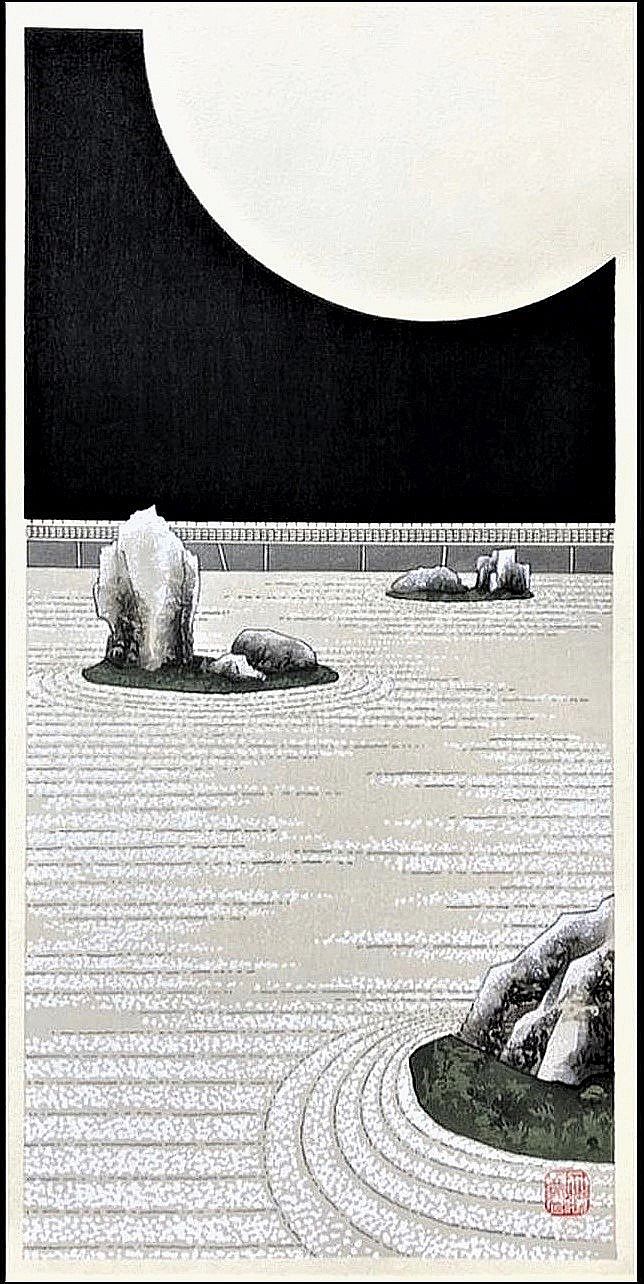
"Kagayaki" (Bright Moonlight at Ryoan-ji Temple ) is by Teruhide Kato.
80 notes
·
View notes
Text
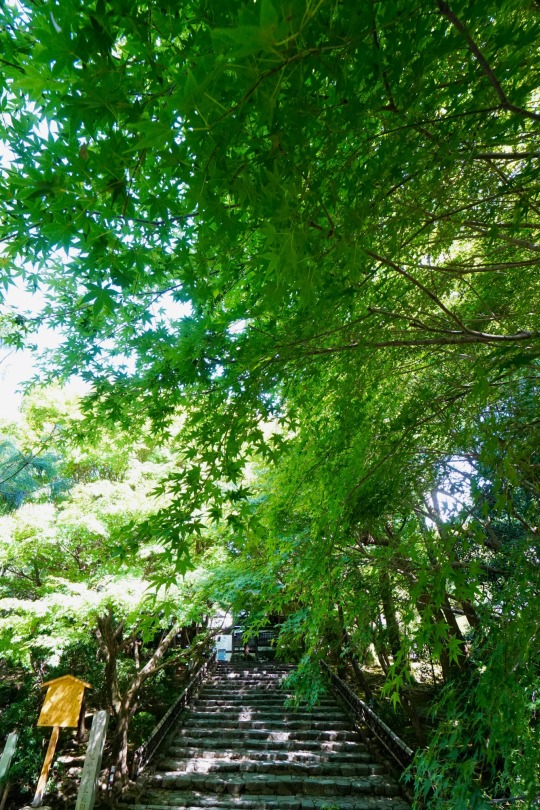

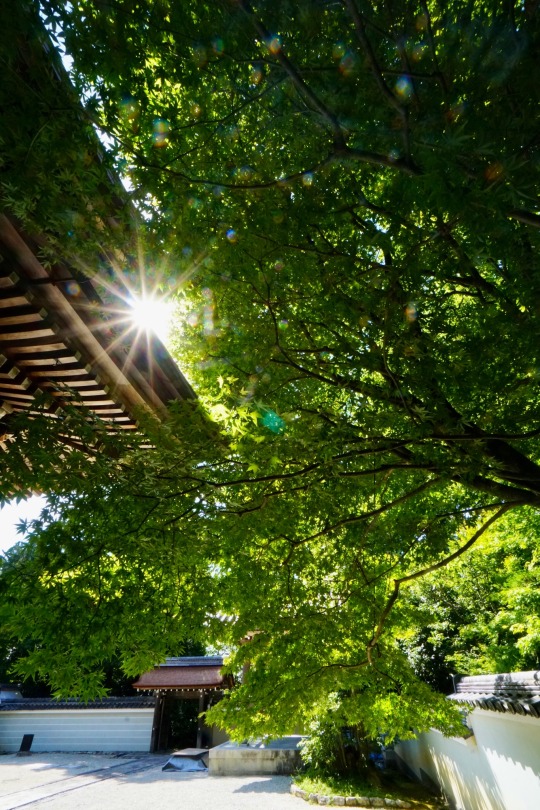
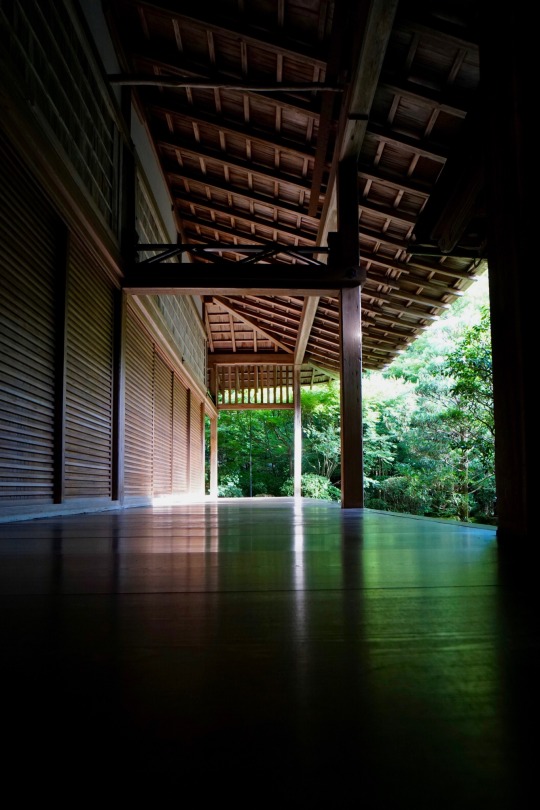




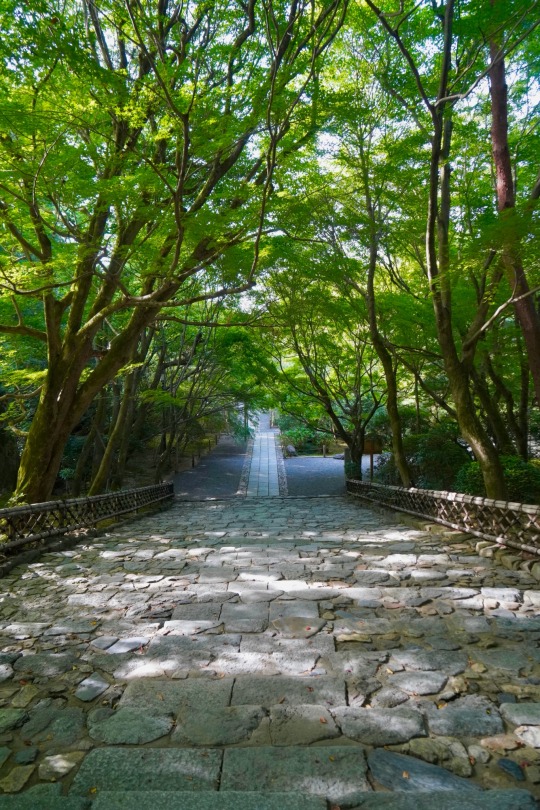
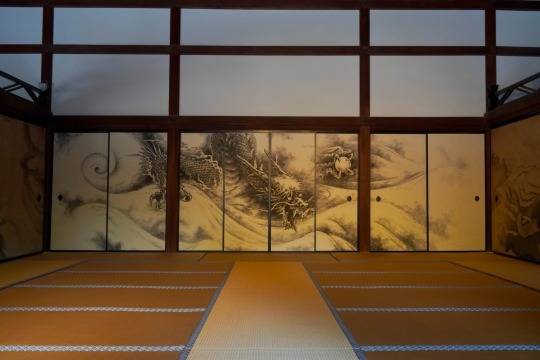
京都 龍安寺
kyoto ryoan-ji temple
121 notes
·
View notes
Text
Kyoto Travel Guide: Unveiling the Timeless Charms of Japan's Cultural Heart

Kyoto, a city steeped in history and cultural richness, beckons travelers from around the world to embark on a captivating journey through time. Nestled amidst lush mountains and picturesque landscapes, Kyoto preserves the essence of traditional Japan like no other city. With its awe-inspiring temples, enchanting gardens, and captivating geisha culture, Kyoto offers a truly immersive experience that unveils the country's profound cultural heritage. Join us as we explore the must-visit destinations and hidden gems of this extraordinary city.
Timeless Temples and Spiritual Splendor

Kyoto boasts a wealth of ancient temples, each with its own unique allure. The iconic Kinkaku-ji (Golden Pavilion) dazzles with its shimmering gold exterior reflected in the surrounding pond, while the serene Kiyomizu-dera Temple offers breathtaking panoramic views of the city from its wooden terrace. Visit the tranquil Ryoan-ji Temple and contemplate the minimalist beauty of its famous Zen rock garden. Explore the exquisite gardens and vibrant red torii gates of Fushimi Inari Taisha, an emblematic Shinto shrine.
Traditional Neighborhoods and Geisha Culture
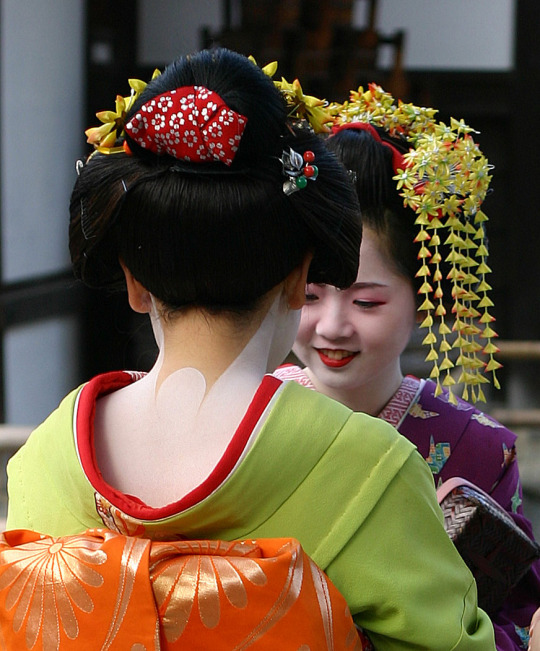
Wander through Kyoto's atmospheric traditional neighborhoods, such as Gion and Pontocho, where the spirit of old Japan thrives. Keep an eye out for elegantly dressed geisha or apprentice geisha known as maiko gracefully gliding along the streets. Immerse yourself in the enchanting world of tea ceremonies, traditional music, and dance performances. Visit the Gion Corner for an insightful cultural show or indulge in a memorable meal at a traditional ryotei (Japanese restaurant).
Enchanting Gardens and Tranquil Retreats

Kyoto's meticulously designed gardens offer a peaceful escape from the bustling city. Explore the sublime beauty of the Arashiyama Bamboo Grove, where towering bamboo stalks create a mesmerizing atmosphere. Stroll through the stunning gardens of Katsura Imperial Villa or experience the harmony of nature at the exquisite Saiho-ji Temple, also known as the Moss Temple. Admire the seasonal beauty of cherry blossoms in Maruyama Park or the vibrant hues of maple leaves in the autumn foliage.
Cultural Heritage and Museums

Delve deeper into Kyoto's cultural heritage by visiting its fascinating museums and art galleries. The Kyoto National Museum houses an extensive collection of Japanese art and artifacts, including exquisite Buddhist sculptures and delicate ceramics. Gain insight into traditional Japanese craftsmanship at the Kyoto Museum of Traditional Crafts or explore the intriguing history of manga at the Kyoto International Manga Museum. Discover the captivating world of Noh theater at the Kanze Noh Theater or witness a mesmerizing Kabuki performance at the Minamiza Theatre.
Delightful Culinary Experiences

Kyoto's culinary scene is a feast for the senses, offering a diverse array of traditional delicacies. Indulge in kaiseki, a multi-course fine dining experience that showcases the essence of Kyoto's seasonal ingredients. Savor the exquisite flavors of matcha (powdered green tea) and wagashi (traditional Japanese sweets) at a traditional tea house. Explore Nishiki Market and sample an array of local delicacies, from fresh seafood to delectable street food. Don't forget to try Kyoto's famous yudofu (tofu hot pot) for a truly authentic taste of the city.
youtube
Kyoto, with its timeless temples, captivating geisha culture, serene gardens, and rich cultural heritage, offers an unforgettable journey into the heart of Japan's traditions. Whether you're exploring ancient temples, immersing yourself in the vibrant streets of Gion, or savoring the delicate flavors of Kyoto's cuisine, the city's essence will envelop you in its enchantment. So, embrace the spirit of Kyoto and allow yourself to be transported to a world where past and present harmoniously converge, leaving you with cherished memories that will last a lifetime.
#cheap tickets#tourism#flight tickets#travel stories#traveling#cheap travel#travel tips#cheap flights#travel#youtube#japan#Youtube
13 notes
·
View notes
Text
"The eye is the organ of distance and separation, whereas touch is the sense of nearness, intimacy and affection. The eye surveys, controls and investigates, whereas touch approaches and caresses. During overpowering emotional experiences, we tend to close off the distancing sense of vision; we close the eyes when dreaming, listening to music, or caressing our beloved ones. Deep shadows and darkness are essential, because they dim the sharpness of vision, make depth and distance ambiguous, and invite unconscious peripheral vision and tactile fantasy. How much more mysterious and inviting is the street of an old town with its alternating realms of darkness and light than are the brightly and evenly lit streets of today! The imagination and daydreaming are stimulated by dim light and shadow. In order to think clearly, the sharpness of vision has to be suppressed, for thoughts travel with an absent-minded and unfocused gaze. Homogenous bright light paralyses the imagination in the same way that homogenisation of space weakens the experience of being, and wipes away the sense of place. The human eye is most perfectly tuned for twilight rather than bright daylight. Mist and twilight awaken the imagination by making visual images unclear and ambiguous; a Chinese painting of a foggy mountain landscape, or the raked sand garden of Ryoan-ji Zen Garden give rise to an unfocused way of looking, evoking a trance-like, meditative state."
Juhani Pallasmaa, The Eyes of the Skin
14 notes
·
View notes
Video
Japan's Most-Famous Garden by Patrick Vierthaler
Via Flickr:
Ryoan-ji / 龍安寺
#龍安寺#京都#秋#もみじ#紅葉#2023#禅#Kyoto#Japan#Zen#temple#garden#Garten#Tempel#Ryoanji#autumn#fall#foliage#Herbst#Herbstlaub#momiji#flickr
2 notes
·
View notes
Text
Vom Finden der inneren Mitte zu S.O.S. Affenalarm
Nachdem ich dann gestern doch länger wach blieb, war es heute ein eher entspanntes Aufwachen. Da ich um 11.45 Uhr sowieso einen Termin hatte, plante ich es einfach so, dass das mein erster Anhaltspunkt des Tages wird. Wie gestern schon angekündigt, gibt es heute auch die Auflösung, um was es sich denn handelt.
Um der japanischen Kultur etwas näher zukommen, wollte ich auch die etwas ruhigeren Seiten kennenlernen. Dementsprechend buchte ich mir eine Teilnahme an einer Teezeremonie. Dazu musste ich allerdings erst einmal 50 Minuten mit dem Bus durch die halbe Stadt fahren. An der Haltestelle angekommen hatte ich noch ca. 20 Minuten zur Zeremonie, weshalb ich ein bisschen um den Block spazierte. Pünktlich um 11.45 Uhr ging es dann los. Wir waren insgesamt 13 Personen, die teilnahmen. Von der Teemeisterin wurde uns zunächst erklärt, was eine Teezeremonie für die Japaner eigentlich bedeutet und woher sie stammt. Danach zeigte sie uns wie wir uns als Gäste zu verhalten haben, wenn wir unseren Tee serviert bekommen. Die Zeremonie selbst beginnt aber erst mit der Verkostung der angebotenen Süßigkeiten. Danach wurde jedem von uns nacheinander von der Gastgeberin der Matcha-Tee serviert, welchen wir gemäß der Anleitung tranken. Leider waren wir nicht die beste Gruppe, da wir uns doch etwas zu viel unterhielten. 😅 Normalerweise herrscht bei der Teezeremonie Stille, um einerseits den Tee zu genießen und andererseits sich zu entspannen. Ich glaube, die Leiterin war darüber auch nicht so ganz erfreut gewesen, aber hat es uns dann doch etwas verziehen, da wir das ja zum ersten Mal gemacht haben. Nach einer kurzen Fragerunde zeigte sie uns noch, wie man den Tee zubereitet. Das waren aber vermute ich nur die Basics an sich, da wir die traditionellen Handhabungen, die sie vorher beim Zubereiten gemacht hat, nicht machen mussten.
Es war auf jeden Fall interessant, auch diesen Teil der japanischen Kultur kennenzulernen. Für die nächste Teezeremonie bin ich jetzt vorbereitet, nur für Tempel oder ähnliche Orte langt es, denke ich, noch nicht. 😂 Außerdem hat mich die Zeremonie dahingehend bestätigt, dass Matcha einfach gut schmeckt. (Die Zeremonie (Süßigkeiten + Tee) an sich geht normalerweise, wie auch heute, nur 15-20 Minuten. Die restlichen 20 Minuten des Termins waren dann die Fragenrunde und der Zubereitungskurs.)
Von der Teezeremonie aus ging es dann zum eine Minute entfernten Kinkaku-ji, einem buddhistischen Tempel. Man könnte meinen, dass ich das absichtlich so gelegt habe. Und ja, dass habe ich auch. Beziehungsweise besser gesagt mein Reiseführer. 😄 Aus diesem hatte ich auch die Empfehlung für den gewählten Teezeremonie-Kurs. Der Tempel Kinkaku-ji ist bekannt für seinen schönen Park, aber vor allem für das Tempelgebäude mit Blattgoldfassade. Deshalb wird er auch goldener Tempel genannt. (Wer hätte das gedacht...) Der Garten war aber nicht so spektakulär, aber der Tempel hat es dann doch wieder etwas herausgeholt. Zur Abendstunde wäre das bestimmt nochmal ein beeindruckender Anblick gewesen.
Auf dem Weg zum nächsten Tempel ging es dann noch kurz in eine Ramen-Bar, um mein Frühstück/Mittagessen zu mir zu nehmen. Bis auf zwei Tassen Matcha-Tee und den kleinen Süßigkeiten hatte ich bisher noch nichts im Magen 😅 Das Ramen war solide. Mittlerweile bin ich den Geschmack von japanischen Ramen schon ein bisschen gewöhnt. Wäre es mein erster Tag in Japan gewesen, hätte ich das Ramen vielleicht als Weltklasse eingeschätzt. 😂
Der weitere Fußmarsch führte mich dann zum Ryoan-ji-Tempel. Der dazugehörige Garten war auf jeden Fall eindrucksvoller als der Garten des Kinkaku-ji-Tempels, wobei ich den steinernen Zen-Garten jetzt nicht so gefühlt habe. Vielleicht hätte ich dafür ein wenig dort entspannen müssen. Beeindruckend waren allerdings die mit Drachen verzierten Wandbilder und Schiebetüren.
Da es sich von meinem Standort sehr gut anbot, einen Ausflug nach Arashiyama zu machen, nutzte ich das auch und fuhr mit dem Bus dorthin. Der Bezirk Arashiyama liegt etwas außerhalb im Westen der Stadt. Neben Tempelgebäuden bietet der Bezirk aber noch eine besondere Touristenattraktion. Auf dem Mt. Arashiyama befindet sich der Iwatayama Affenpark. Hier trifft man auf freilaufende Makaken treffen und sie mit dem im Park verfügbaren Futter füttern.
Beim Eintritt wurde mir leider nicht gesagt, dass man den Hügel ein Stück hochlaufen muss. Hätte ich mich wohl vorher informieren müssen... Aber der Aufstieg hat sich dann doch gelohnt. Neben den spielerischen Affen, die, solange man nicht die Kamera direkt in ihr Gesicht hält, zwischen den Besuchern herum spazierten, konnte man den Ausblick über Kyoto genießen.
Zum Abschluss ging es dann nochmal Richtung des Tenryu-ji-Tempels. Hier entschied ich mich aber nur den Garten zu besuchen. Leider hat sich das auch nicht wirklich gelohnt. Da habe ich schon bessere gesehen. 😄 Dafür war der anschließende Bambus-Wald wieder ein Highlight. Theoretisch kann man auch noch noch das Grundstück und die dazugehörige Villa des berühmten Schauspielers Okochi Denjiro besuchen. Für 1000 Yen war mir das dann aber doch zu viel... Hätte ich den Garten davor nicht mitgenommen, wäre ich wahrscheinlich hin.
Ich machte mich dann allerdings auf zur Bahnhaltestelle und fuhr zurück zum Hauptbahnhof in Kyoto. Um etwas zu Verschnaufen machte ich einen Stopp im Hostel und entspannte für eine knappe Stunde. Danach ging es noch auf Essenssuche. Eigentlich hatte ich mir ein gutes Sushi-Lokal mit englischer Karte herausgesucht, aber dieses war leider schon voll besetzt. 😞 Deshalb verschlug es mich dann doch wieder in die Food Hall unter dem Bahnhofsgelände, wo ich dann in einem Yakitori-Restaurant eine Mischung aus Yakitori- und Kushikatsu-Spießen genoss. Das Essen war zwar lecker, aber war halt leider kein Sushi. 😄
Für morgen steht dann noch eine Station in Kyoto aus und danach geht es dann weiter nach Fukuoka. Auf die Stadt bin ich besonders gespannt, vor allem essenstechnisch, da die Stadt für ihre Streetfood-Stände bekannt ist.

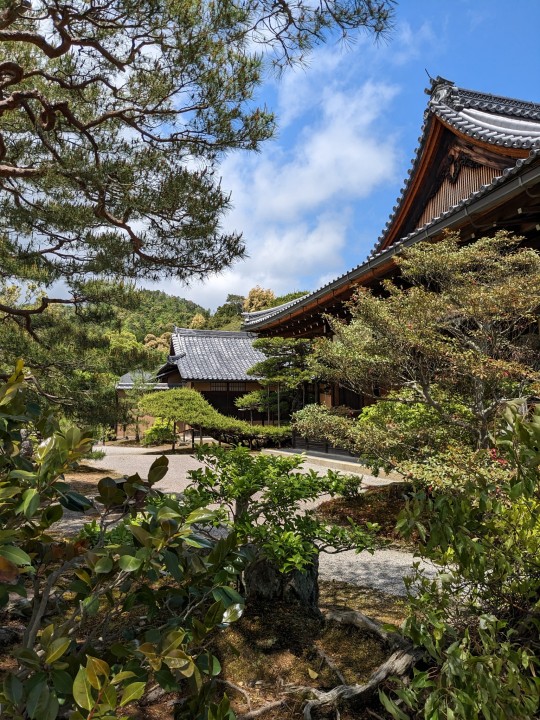
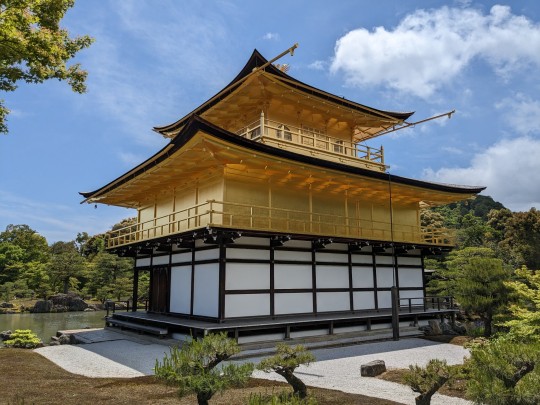
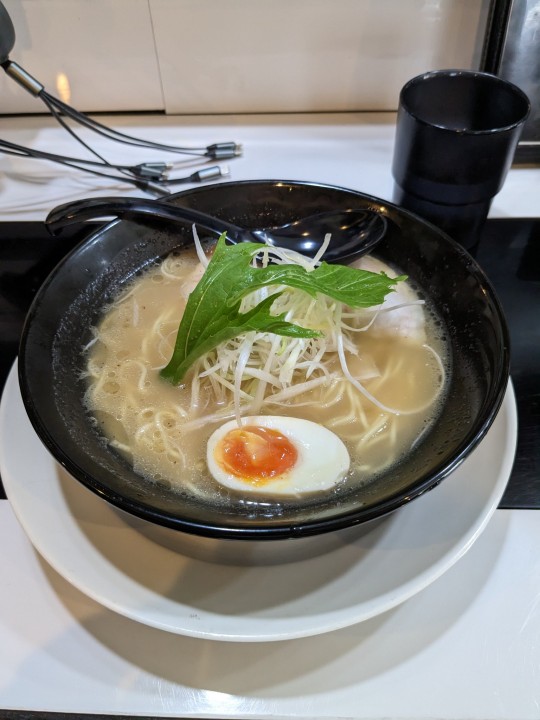


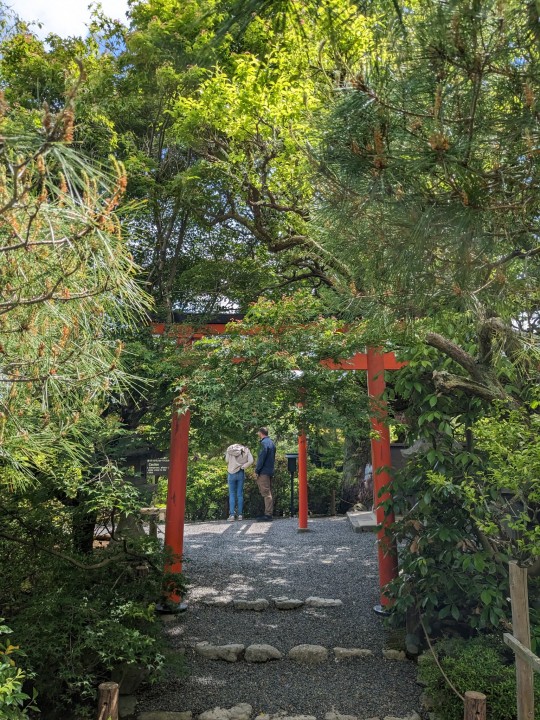


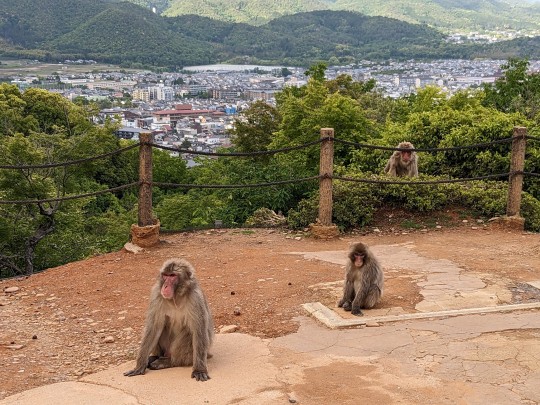
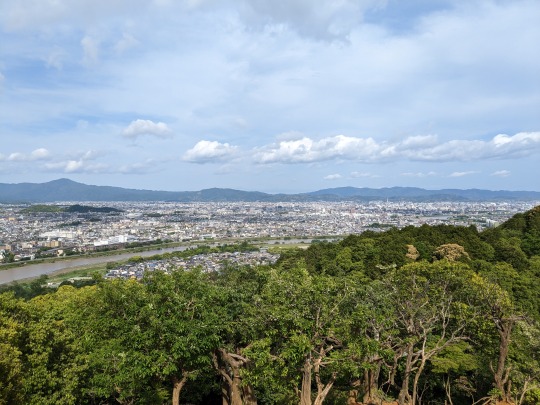
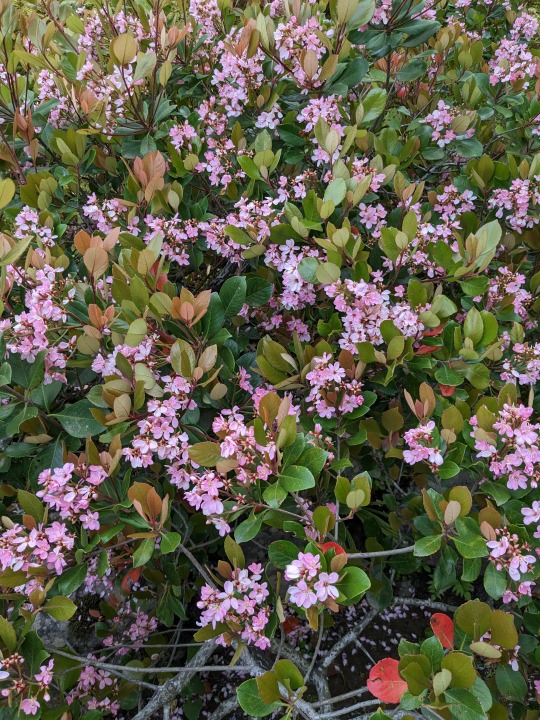
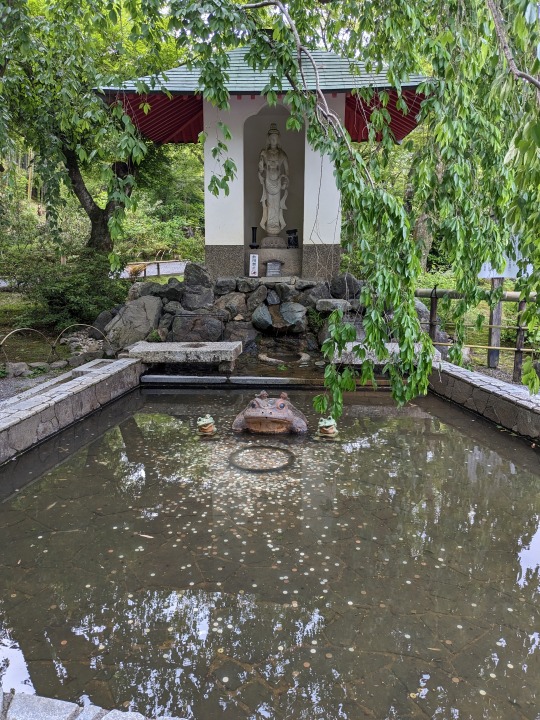
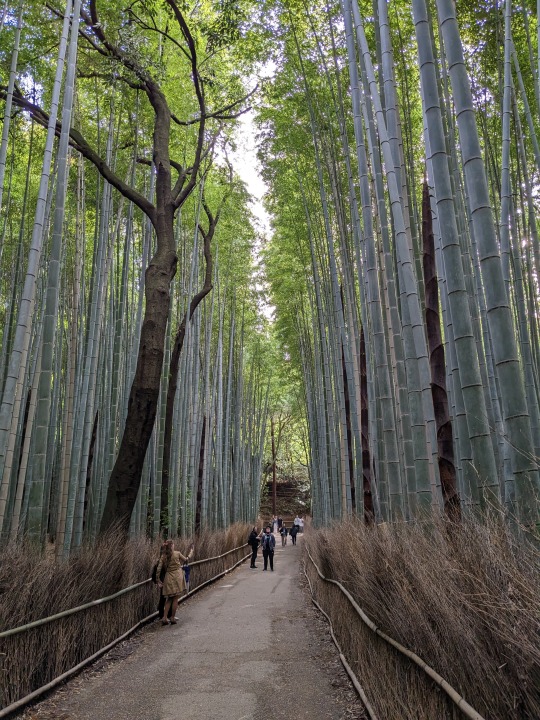

3 notes
·
View notes
Photo

📸龍安寺庭園“石庭” / Ryoanji Temple Rock Garden, Kyoto ② 京都の世界遺産『龍安寺庭園“石庭”』が素敵…! 世界中の人が再び訪れる日を待ち侘びる日本の代表的な“禅の庭”…作庭者は室町幕府管領 #細川勝元?美術家 #相阿弥 ?茶人 #金森宗和 …?15の石の配置の意味は…?まだまだ謎多き、その謎の考察も楽しい枯山水は『庭の国宝』国の特別名勝にも指定。 京都・龍安寺庭園“石庭”の紹介は☟ https://oniwa.garden/ryoan-ji-temple-rock-garden-%e9%be%8d%e5%ae%89%e5%af%ba%e5%ba%ad%e5%9c%92/ ...... 続き。その作者や制作された年代は“謎が多い”と言われています。 龍安寺を開いた細川勝元・義天玄承の作庭説、龍安寺を再建した細川政元の作庭説、特芳禅傑などの優れた禅僧や、世界遺産『銀閣寺』の庭園の作庭者のひとり・相阿弥、江戸時代の武将&茶人・金森宗和🍵などなど。 . いずれにせよその作庭の謎――作者や十五の石組の意図みたいなものについては様々な先生方が研究されているので論文検索サイト(J-STAGE)から検索してご一読ください。 『足立美術館』の庭園の作者・中根金作さんは寛永年間(江戸時代初期)の作庭説と唱えている。 . . 当サイトでも今となっては数百の「枯山水庭園」を紹介していて、「石庭」も当然ながら現代にかけて洗練されていっている。 なので“すごさ”とか“インパクト”であれば、龍安寺を上回るものも正直たくさんあると思うけれど―― . でもこの龍安寺の石庭のすごいところは“この表現の最先鋭だった”から。 武将・大名の権力を示すために作られた室町時代の庭園は手数が多いというか豪壮な石組の庭園が多い印象がある中で、これだけ 《 余白 》 をもたせた作品が生み出されたところにこの庭園のスゴさがある。 . ※そして自分で室町時代の庭園一覧見てて、「ああ、『大徳寺 龍源院』で相阿弥が造った“竜吟庭”は同じような余白があるなあ」と思ったりする。 . そして“鏡容池”💧は龍安寺や石庭より古くから存在していたもので、平安時代に徳大寺家がこの地を別荘とした際に築かれたもの。 この池を中心とした広い境内では季節の樹木・花々🌸が植栽され、道端では苔むした庭が整えられています🌿 . 余談。この龍安寺の石庭には、どの位置から見ても必ず1つ欠ける――というエピソードがありますが、岡山県の奈義町現代美術館にまるで上から龍安寺の石庭が眺められるアート作品『奈義の龍安寺』(荒川修作+マドリン・ギンズ)があります。龍安寺が好きで、アートが好きな人はマスト! . で、続けて“西の庭”を紹介します。 . 京都・龍安寺庭園“石庭”の紹介は☟ https://oniwa.garden/ryoan-ji-temple-rock-garden-%e9%be%8d%e5%ae%89%e5%af%ba%e5%ba%ad%e5%9c%92/ ーーーーーーーー #japanesegarden #japanesegardens #kyotogarden #zengarden #beautifulkyoto #beautifuljapan #japanesearchitecture #japanarchitecture #japanarchitect #japandesign #japanart #jardinjaponais #jardinjapones #japanischergarten #jardimjapones #建築デザイン #庭園 #日本庭園 #京都庭園 #庭院 #庭园 #石庭 #枯山水 #枯山水庭園 #karesansui #世界遺産 #おにわさん (京都 世界遺産 龍安寺) https://www.instagram.com/p/CgGfh_RvU2m/?igshid=NGJjMDIxMWI=
#細川勝元#相阿弥#金森宗和#japanesegarden#japanesegardens#kyotogarden#zengarden#beautifulkyoto#beautifuljapan#japanesearchitecture#japanarchitecture#japanarchitect#japandesign#japanart#jardinjaponais#jardinjapones#japanischergarten#jardimjapones#建築デザイン#庭園#日本庭園#京都庭園#庭院#庭园#石庭#枯山水#枯山水庭園#karesansui#世界遺産#おにわさん
3 notes
·
View notes
Text
Top 10 Must-See Temples and Shrines in Japan
There are countless temples and shrines in Japan, a country where old customs and modernity coexist together, serving as both architectural wonders and spiritual havens. These revered locations, which are dispersed throughout the nation, provide a fascinating window into the intricate cultural fabric and ingrained religious customs of Japan.
Traveling through this enchanted island, the charm of ancient buildings and tranquil settings beckons. Every location in Japan—from Tokyo to Kyoto, Nara to Nikko—unfolds a distinct chapter in the country's spiritual past. The trip includes the well-known Senso-ji Temple in vibrant Tokyo, where the aroma of incense blends with the sounds of historic ceremonies, and the peace of Kyoto's Ryoan-ji, a Zen sanctuary featuring a simple rock garden that invites reflection.
Every temple and shrine tell a story of custom, devotion, and architectural genius, whether you're touring the vivid vermillion torii gates at Fushimi Inari Taisha or gazing in wonder at the golden grandeur mirrored in the waters around Kinkaku-ji. Come with us on a spiritual tour through Japan's must-see temples and shrines, where each step is a step back in time and each silent prayer contributes to the melodic harmony of this alluring country.
Here are some must-see temples and shrines in Japan.
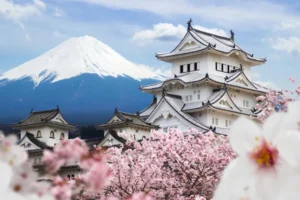
1. Senso-ji Temple: An Iconic Tokyo Site: The oldest temple in Tokyo is Senso-ji, which is tucked away in the Asakusa historic area. Visitors approach the main hall through the colorful Thunder Gate and Nakamise Shopping Street, where the sounds of historic rites mix with the aroma of incense.
2. Fushimi Inari Taisha: The Infinite Journey to Torii: Fushimi Inari Taisha, in Kyoto, is well-known for its enthralling route made up of hundreds of vermillion torii gates. A mysterious ascent of the forested Mount Inari is provided by this Shinto temple, which is devoted to the god of rice and wealth, Inari.
3. Kyoto's Golden Pavilion, or Kinkaku-ji: Kyoto's Kinkaku-ji, often known as the Golden Pavilion, is a Zen Buddhist temple and a UNESCO World Heritage Site. This magnificent building's top stories are covered in gold leaf, which reflects in the pond's mirror-like waters to create an air of ethereality and tranquillity.
4. Todai-ji: The Giant Buddha of Nara: The massive bronze statue of Buddha, known as the Daibutsu, is kept at Todai-ji in Nara. Viewers may marvel at the enormous size of this Buddha statue and explore the lovely surrounding park, which is home to hundreds of freely ranging deer, at one of Japan's most historically significant temples.
5.Byodo-in: A Uji Phoenix: Known for its Phoenix Hall, Byodo-in, located in the city of Uji, is a UNESCO World Heritage Site. Originally built during the Heian period, this graceful temple is a stunning example of Pure Land Buddhism architecture. It is encircled by colourful gardens and a peaceful pond.
6. Himeji Castle: A complex of castles with a shrine: Himeji Castle in Hyogo is famous for its association with the Shinto deity Sanno Gongen, despite being primarily a castle. With its shrine, the castle complex offers a singular fusion of religious importance and architectural beauty, providing an enthralling window into Japan's blending of cultures.
7. Miyajima's Floating Wonder, Itsukushima Shrine: Known for its "floating" torii gate, Itsukushima Shrine is a UNESCO-listed landmark situated on stilts in the seas of Miyajima Island. With the Seto Inland Sea as a backdrop, the gate appears to be floating in water during high tide, producing an amazing and bizarre spectacle.
8. Ise Grand Shrine: Shinto's Spiritual Center: Ise Grand Shrine donors Amaterasu, the sun goddess, and is regarded as the most revered Shinto shrine in all of Japan. Known as Shikinen Sengu, this complex of shrines in Ise City is rebuilt every 20 years to represent the unending rebirth of nature and life.
9. Kyoto's Zen Serenity, Ryoan-ji: The Zen rock garden of Ryoan-ji, a Zen Buddhist monastery in Kyoto, is well known for being a masterwork of peace and simplicity. The fifteen rocks and thoughtfully raked gravel encourage reflection and offer a calm haven from the busy city life.
10.Chic in Tochigi: Nikko Toshogu: This ornate temple honours Tokugawa Ieyasu, the shogunate's founder, and is tucked away in the Nikko highlands. The rich tapestry of Nikko Toshogu is enhanced by the elaborate carvings, striking colors, and holy stable containing the three wise monkeys.
Comprehensive examination of Japan's must-visit temples and shrines, it is clear that these revered locations are significant portals to the country's spirit as well as architectural marvels. From the modern Tokyo skyline to the historic lanes of Kyoto, these spiritual retreats welcome travelers to explore Japan's rich cultural history and find peaceful moments in the middle of the fast-paced modern world.
Getting a Japan visa is the first step towards discovering a wealth of spiritual and cultural treasures for anybody thinking about making the trek to these hallowed sites. Every holy step becomes a monument to the nation's enduring traditions and the peaceful blending of past and present, whether you are standing beneath the vermillion torii gates of Fushimi Inari Taisha or gazing at the golden brightness of Kinkaku-ji.
In addition to showcasing the country's architectural skills, Japan's temples and shrines serve as a link between tourists and the nation's spiritual center. They serve as a reminder that, despite the country's rapid technological advancements and modernization, Japan values its sacred places as a testament to its enduring cultural heritage. Thus, when you go out on a spiritual adventure that transcends time and makes a lasting impression on the soul, allow the echoes of prayers and the murmurs of old rites to lead you through these spiritual wonders.
0 notes
Text
Chùa Ryoan-ji
Nhấm nháp tĩnh lặng của thời gian, Chùa Ryoan-ji nằm yên giữa thành phố Kyoto như một bức tranh tĩnh lặng, mời gọi những người du lịch tìm hiểu về lịch sử, triết lý Zen, và hương vị đặc trưng của ẩm thực truyền thống Nhật Bản. Hành trình khám phá văn hóa và ẩm thực tại Chùa Ryoan-ji không chỉ là việc đắm chìm trong vẻ đẹp kiến trúc và tâm linh mà còn là cuộc phiêu lưu tìm hiểu về nền văn hóa độc đáo của đất nước Mặt Trời Mọc.
Chùa Ryoan-ji không chỉ là nơi để bạn cảm nhận sự tĩnh lặng mà còn là nơi để bạn khám phá những hình ảnh lịch sử, thơ mộng từ khu vườn kiến trúc độc đáo và thưởng thức ẩm thực truyền thống tại các ngôi chùa. Hãy cùng bắt đầu hành trình tuyệt vời này, nơi hòa mình vào vẻ đẹp của quá khứ và vị ngon của hiện tại.
https://dulichnhatbantour.wixsite.com/dulichnhatbantour/post/kham-pha-chua-ryoan-ji-hanh-trinh-tim-hieu-van-hoa-va-am-thuc-doc-dao
https://dulichnhatbantour.wixsite.com/dulichnhatbantour
https://dulichnhatbantour.wixsite.com/dulichnhatbantour/post/higashikawa-diem-den-doc-dao-cho-du-lich-va-am-thuc-tai-vung-nui-bac-nhat-ban
0 notes
Text
Solitude and Serenity: Best Solo Travel Destinations for Peaceful Getaways
Introduction
Traveling alone can be a deeply enriching experience, offering the opportunity for introspection, self-discovery, and a sense of freedom that is truly unparalleled. While bustling tourist destinations have their allure, there are hidden havens around the world that provide solace and serenity for solo travelers seeking a peaceful getaway. In this article, we'll explore some of the best solo travel destinations that offer solitude and serenity, allowing you to recharge and connect with yourself and the world around you.
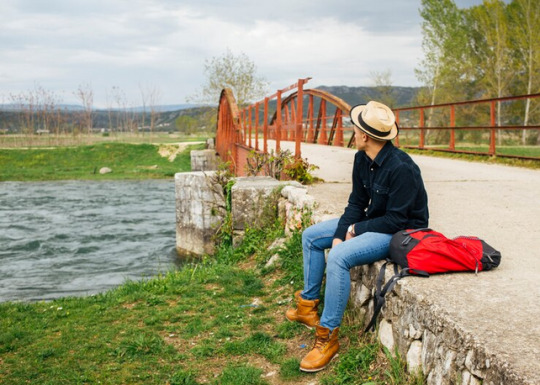
Santorini, Greece: Timeless Beauty and Tranquility
Santorini, with its iconic blue-domed churches and breathtaking sunsets, is a renowned destination for romantic getaways. However, it also offers a serene atmosphere that solo travelers can relish. The charming villages of Oia and Fira, perched atop volcanic cliffs, provide a tranquil escape. You can explore winding cobblestone streets, relax at cozy cafes, and savor local cuisine while taking in stunning views of the Aegean Sea. The calm, azure waters surrounding Santorini are perfect for swimming, snorkeling, or simply basking in the sun's warmth.
Kyoto, Japan: Spiritual Retreat Amidst Tradition
Kyoto, Japan's cultural and spiritual heart, beckons solo travelers with its serene temples, traditional tea houses, and tranquil gardens. It's a city where the past gracefully coexists with the present. You can immerse yourself in the Zen-like atmosphere of places like the Ryoan-ji Temple, famous for its stone garden, or the Fushimi Inari Shrine, known for its thousands of vermilion torii gates. Exploring Kyoto's historic streets, you'll find moments of peaceful reflection amidst the rich tapestry of Japanese tradition.
Banff National Park, Canada: Nature's Solitude
For solo travelers seeking solitude in the embrace of nature, Banff National Park in the Canadian Rockies offers an ideal sanctuary. With its pristine lakes, rugged mountain landscapes, and abundant wildlife, this UNESCO World Heritage site is a haven for hikers, photographers, and those in search of quietude. You can embark on scenic hikes like the Johnston Canyon Trail or kayak on the serene Moraine Lake, surrounded by towering peaks. The park's breathtaking vistas and fresh mountain air provide an escape from the bustle of everyday life.
Iceland: Land of Fire and Ice
Iceland's dramatic landscapes, including volcanoes, glaciers, geysers, and hot springs, make it a captivating destination for solo travelers seeking both adventure and tranquility. The Blue Lagoon, a geothermal spa, offers a unique opportunity to relax in mineral-rich, milky-blue waters amid a stunning lava field. You can also embark on road trips along the famous Ring Road, stopping at remote waterfalls, geothermal areas, and black sand beaches. Iceland's rugged beauty and sparse population provide ample opportunities for introspection and solitude.
Bali, Indonesia: Spiritual Bliss and Tropical Beauty
Bali, known as the "Island of the Gods," offers a harmonious blend of spiritual serenity and tropical paradise. Solo travelers can explore the island's lush rice terraces, vibrant temples, and pristine beaches. The town of Ubud, with its tranquil atmosphere and rich cultural heritage, is an ideal base for introspection and relaxation. You can partake in yoga and meditation retreats, visit sacred temples like Uluwatu, or simply unwind on the golden shores of Nusa Dua. Bali's warm hospitality and natural beauty create a peaceful haven for those traveling alone.
New Zealand: Nature's Playground
New Zealand, with its diverse landscapes, offers solo travelers a playground of natural beauty and solitude. The South Island, in particular, boasts pristine fjords, rugged coastlines, and stunning alpine scenery. Milford Sound, with its towering cliffs and cascading waterfalls, is a must-visit destination. Hiking the Routeburn Track or the Abel Tasman Coastal Track allows you to immerse yourself in the tranquility of the wilderness. New Zealand's untouched wilderness is a perfect canvas for solo adventures and self-discovery.
Bhutan: Tranquility in the Himalayas
Bhutan, nestled in the Eastern Himalayas, is a destination that prioritizes Gross National Happiness over economic development. This commitment to well-being results in a peaceful and harmonious atmosphere that solo travelers can relish. The country's stunning landscapes, including lush valleys and pristine forests, provide a serene backdrop for self-reflection. Bhutan's ancient monasteries, like the Taktsang (Tiger's Nest) Monastery, offer a unique spiritual experience. As a solo traveler, you can immerse yourself in Bhutan's serene culture and natural beauty.
Conclusion:
Solo travel offers a unique opportunity for introspection, self-discovery, and peaceful exploration of the world. These solo travel destinations, from the timeless beauty of Santorini to the tranquil temples of Kyoto, the pristine wilderness of Banff National Park to the dramatic landscapes of Iceland, and the spiritual bliss of Bali to the untouched serenity of Bhutan, each provide a different flavor of solitude and serenity.
Whether you seek solace in nature's embrace, the tranquility of ancient temples, or the simple pleasure of sitting by the sea, these destinations offer a chance to reconnect with yourself and the world around you. So, when you plan your next solo adventure, consider venturing to one of these peaceful getaways, and let the serenity of these hidden gems enrich your solo travel experience.
0 notes
Text
Letztes Mal Kyoto
20.04.2023 - Japan, Kyoto [Sama]:
Da wir aufgrund meines Missgeschicks letzte Woche einen Tag in Kyoto verpasst haben, dachten wir uns noch einmal hier einen Zwischenstopp zu machen.
Uns fehlte noch der Kaiserpalast und ein paar Tempel, die wir uns ansehen wollten. Doch erstmal schliefen wir aus! Der Tag gestern hat uns ziemlich fertig gemacht.
Gegen 10 Uhr machten wir uns dann auf den Weg. Es waren 27 Grad und wir freuten uns das perfekte Wetter draußen nutzen zu können. Im 7-Eleven holten wir uns ein willkommenes Frühstück und mampften es im Kaiserpalast-Park bei Sonnenschein. Den Kaiserpalast durften wir uns leider nur von außen ansehen. Die Räumlichkeiten waren für Normalsterbliche leider nicht zugänglich. Zum Glück waren die meisten Gebäude geöffnet und von außen sichtbar.


Die Räumlichkeiten, die wir von außen sahen, waren ähnlich aufgebaut wie die im Shogunpalast. Es gab viele Räume, in denen die Gäste warten konnten. Je nach Rang, ein anderer Raum. Die Wände waren bemalt mit Tigermalereien, Kranichen und Kirschblüten. Wobei die Tiger bereits zu dieser Zeit in Japan ausgestorben waren und man sich bei den Malereien nur an vorhandenen Zeichnungen aus China orientierte.
Tatsächlich habe ich mir den Kaiserpalast etwas imposanter vorgestellt, als er am Ende eigentlich war. Klar, wir durften uns nicht das ganze Gelände anschauen, aber selbst die Krönungshalle, die wir nur von weiter weg betrachten durften, haute mich jetzt nicht unbedingt vom Hocker.
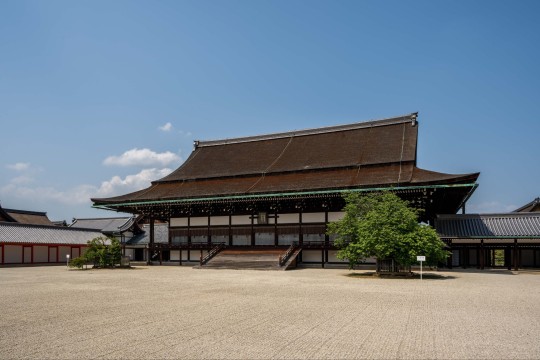
Der schönste Bereich in der Anlage, waren die privaten Räumlichkeiten des Kaisers. Zwar konnten wir wieder einmal nur von außen hineinschauen, aber es reichte. Denn von dort sah man die Wandmalereien, die sich von allen bisherigen unterschieden haben. Zu sehen waren verschiedene Momentaufnahmen eines Geschichtsabschnittes. Diese wurden jedoch über den ganzen Raum hinweg von tiefblauen Wolken begleitet. Bislang sahen wir immer nur sehr gedeckte Farben. Höchstens das Grün der Pinienbäume oder das Goldige in den Räumen kam mal zur Geltung. Aber blau gab es bisher noch nie. Umso schöner und besonderer wirkte es, dass man sie nur durch das Fenster draußen sehen konnte.
Der Kaiser hatte von dort aus einen traumhaften Ausblick auf seinen privaten Garten. Der war riesig, sehr schön verschlungen und mit jedem Schritt von außen daran vorbei, entdeckten wir weitere tolle Dinge darin. Viele kleine Steinlaternen und Brücken versteckten sich unter einer Moosschicht und sogar drei Fischreiher sonnten sich im Teich, als wäre es ihr eigener.


Die Besichtigung war aufgrund des kleinen Zugangsbereiches schnell zu Ende. Also entschieden wir, direkt zum nächsten Punkt auf der Tagesordnung überzugehen. Der goldene Tempel Kinkaku-ji.
Da es eines der Highlights von Kyoto ist, war es natürlich dementsprechend voller Touristen. Die Tempelanlage diente zwischen 1358 und 1408 als Alterwohnsitz des Shoguns Ashikaga Yoshimitsu. Außerdem beinhalten sie die Reliquien des Shoguns. Doch was die Massen hierher zieht, ist mir immer noch ein Rätsel. Ok, er ist komplett mit Blattgold bedeckt und ist das einzige Überbleibsel des ehemaligen Shogun's. Aber davon abgesehen, nicht wirklich schön. Aber vielleicht sind mir die Tempel komplett aus Holz einfach nur lieber.
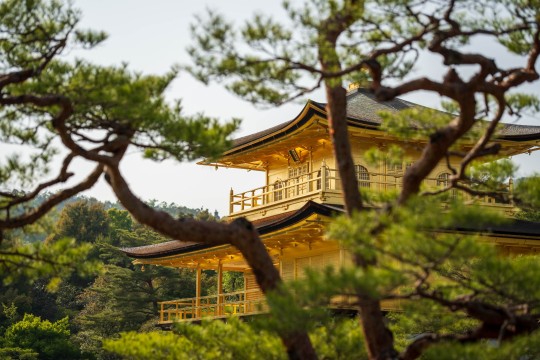

Am goldenen Tempel holten wir uns selbstverständlich unseren Goshuin Stempel ab und machten uns anschließend auf den Weg zum nächsten Tempel. Dem Ryoan-ji. Ein Tempel, der eher nach unserem Geschmack war. Etwas abseits und schön versteckt. Den Tempel konnte man auch von innen besichtigen. Denn dort gab es eine Besonderheit. Ähnlich wie der Komyo-in Tempel im Osten Kyotos besaß auch dieser Tempel einen Steingarten. Wir benoßen die Sonne und betrachteten die Formation des Gartens einige Zeit. Der Garten war umgeben von einer Mauer. Diese hatte eine interessante Färbung. Es handelt sich um Öl, welches bei der Erstellung der Mauer zum Lehm als Schutzschicht hinzugegeben wurde. Mit der Zeit und den Temperaturen "quoll" das Öl aus der Mauer wieder heraus und hinterließ die schöne Färbung.
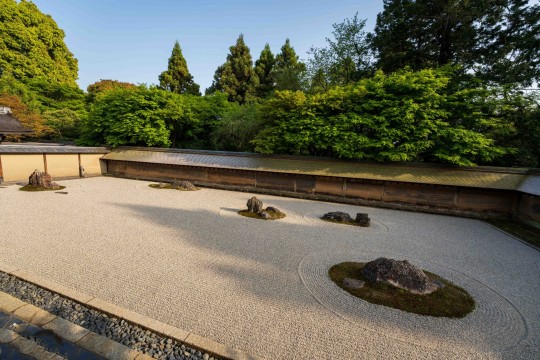
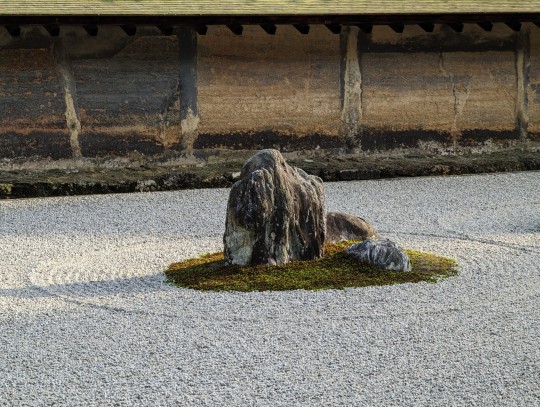
Der Steingarten mit der Öl-Lehmmauer im Hintergrund
Es ist immer wieder schön, durch solch kleine versteckte Tempel zu spazieren, da sie eher an ein japanisches Wohnhaus erinnern. Die Schreine liegen meist am Eingang oder in einem seperaten Raum. Der Rest des Hauses bestehen aus kleinen Zimmern. Umgeben und umhüllt werden die Tempel meist von alten Zypressen, Teichen und angelegten Gärten. Unbeschreiblich schön. Tobi und ich mussten schon feststellen, dass die Gebäude und Natur wirklich unfotogen sind. Auf den Fotos kommt die Schönheit des Ortes nie so wirklich zur Geltung.
Auf der anderen Seite des Tempel befand sich einer der abgelegenen Gärten. Steine und Bäume waren überall mit Moos bedeckt. Zwischen den Pflanzen war ein kleiner Teich angelegt. Es war komplett still. Man hörte lediglich uns beide, wie wir über die knarzenden Holzdielen schlichen und ein leichtes Wasserplätschern. Wir setzten uns und lauschten erneut dem Ort. Dann gaben uns zwei Kröten ein Konzert. Immer wieder wechselten sie sich mit ihrem Gequake ab. Und erneut. Nicht annähernd konnten wir diesen Moment auf Bildern oder Videos festhalten. Wir waren einfach nur dazu eingeladen zu lauschen und zu genießen. Und das taten wir.
0 notes
Text
DAY 1: TEMPLES OF KYOTO
despite the near-constant downpour, day one was an incredible intro to Japan, featuring visits to three temples along the northwestern edge of Kyoto.


TENRYU-JI
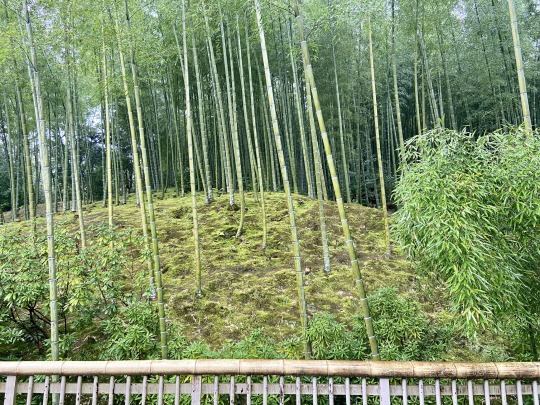

ARASHIYAMA



RYOAN-JI
definitely the highlight of this day. there was something transcendental about sitting along the edge of the rock garden (sketched above), which was nearly silent despite the dozens of people on either side of me. this space in particular makes a beautiful use of ma, the Japanese practice of accentuating the spaces between forms, in this case the oceans of gray pebbles that separated each island of grass and rocks.

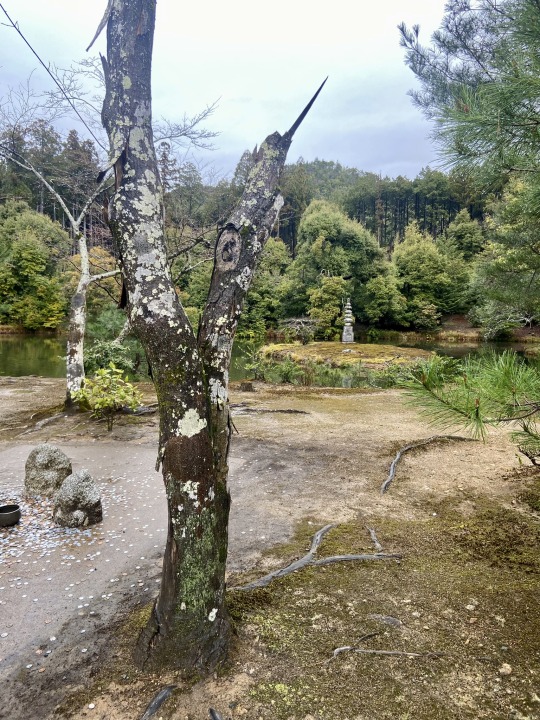
KINKAKU-JI
0 notes
Text

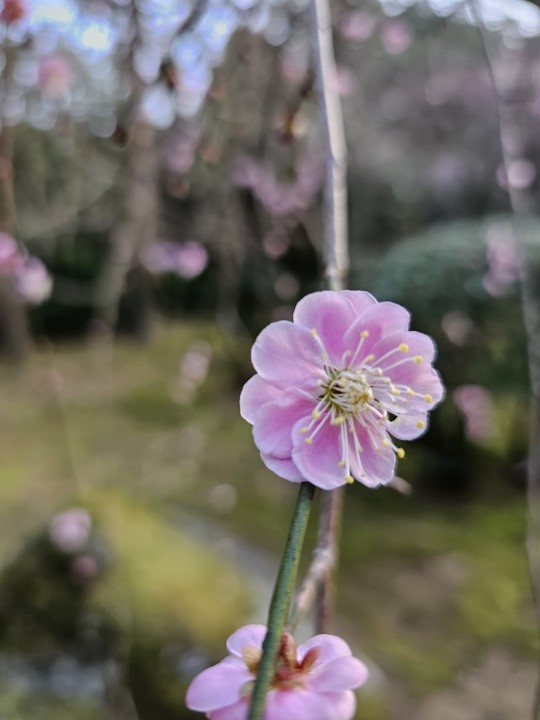

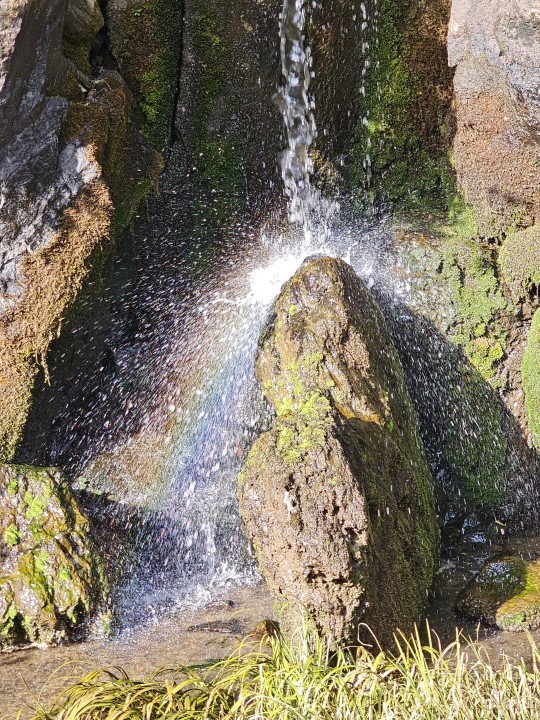
We visited Kinkajoji and Ryoan-ji Rock Garden with my mom, now onto the host family home.
0 notes

